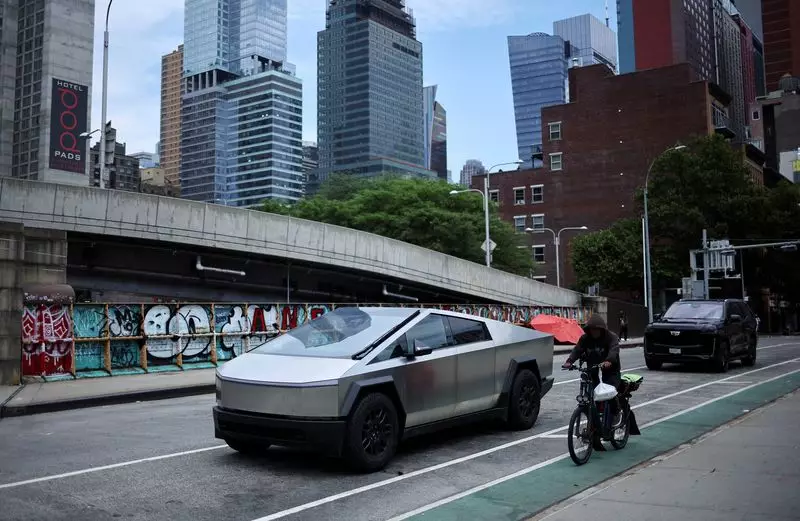In the face of significant expectations, Tesla’s Cybertruck has struggled to meet delivery targets, providing only around 15,000 units in the fourth quarter of its launch year. While the company had previously claimed to have amassed around 2 million pre-orders for this much-anticipated vehicle, estimates for the entire year range between 35,000 and 40,000 units delivered—a figure that starkly contrasts with the lofty projections initially set by the company. This discrepancy raises concerns about the Cybertruck’s market performance and whether it can gain traction among consumers.
According to analysts from Bernstein, the Cybertruck’s performance raises alarms about its viability as a profitable product for Tesla. They suggest that the vehicle is not generating positive gross margins, leading them to question its long-term role within the Tesla lineup. The analysts argue that the resources expended on developing the Cybertruck over the past four years could have been better allocated to creating a more affordable vehicle that the company is currently in dire need of. This strategic miscalculation, they believe, is significant as it distracts from Tesla’s core mission of producing mass-market electric vehicles.
The implications of the Cybertruck’s underwhelming performance extend to Tesla’s overall financial situation. Bernstein analysts project a decline in Tesla’s auto gross margins, forecasting them to fall below 15%, a significant downturn attributed to aggressive pricing strategies and various financing incentives. As the competition in the electric vehicle market intensifies, this forecast illuminates a broader trend of vulnerability among Tesla’s traditional models. Furthermore, the analysts predict that Tesla’s earnings per share will drop from $2.60 in 2023 to around $2.10 in 2024, even after accounting for an anticipated $1 billion in regulatory credits. This decline could spell trouble for a company that has enjoyed a position of relative market dominance.
Another area of focus is Tesla’s ambition in the automated driving sector. Even as the company has attempted to pivot investor attention toward its autonomous technologies, Bernstein’s team expresses skepticism about Tesla’s capability to outperform its rivals in this space. Citing limitations in Tesla’s sensor technology and possible regulatory challenges, they highlight the competitive landscape characterized by companies with more advanced simulation training, like Waymo. Furthermore, even if Tesla manages to achieve Level 5 autonomy first, the question remains whether it can sustain an advantage over competitors as advancements in AI computing power level the playing field.
Overall, the future for Tesla seems to be cloaked in uncertainty, particularly concerning the Cybertruck. The combination of disappointing delivery numbers, potential declines in profitability, and a highly competitive market for autonomous vehicles raises significant challenges. Without a revitalized focus on producing accessible electric vehicles and increasing profitability, Tesla risks losing its edge amid intensifying competition. The upcoming months will be critical as the company reassesses its strategies and adapts to the evolving demands of an increasingly crowded electric vehicle marketplace.

